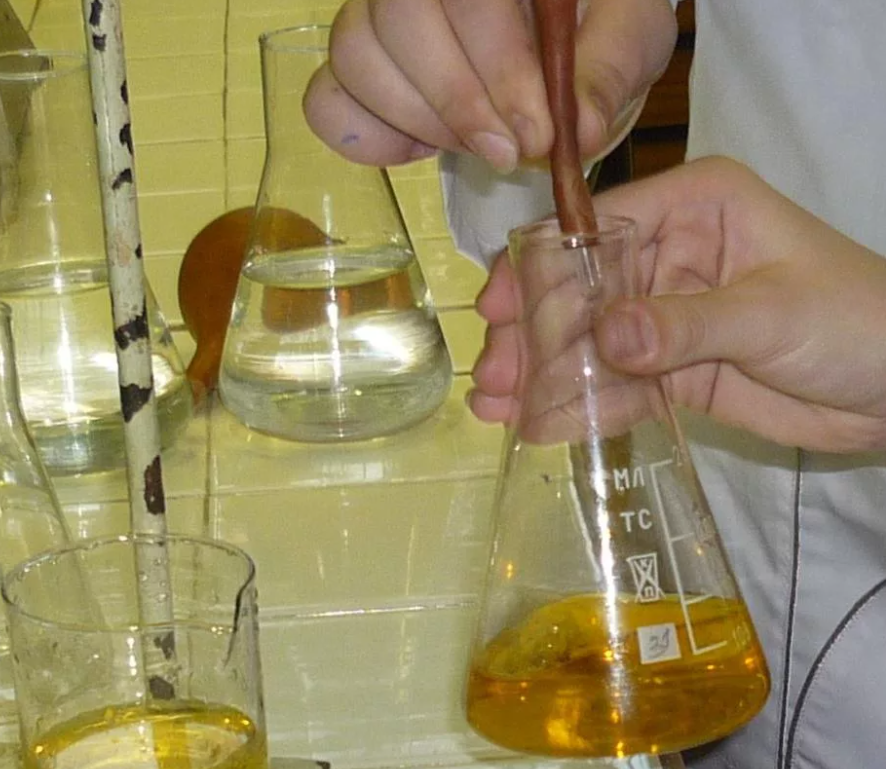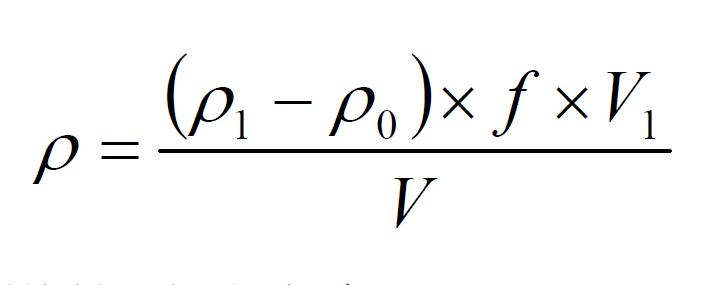The high concentration of soluble antimony and total antimony in daily industrial wastewater can be detected by flame atomic absorption spectrophotometry. Generally, the detection limit of these two parameters is 0.18mg/l, and the lower limit of determination is 0.72mg/l. The collected water samples were filtered or digested and then sprayed into a lean-burning air-acetylene flame. The antimony ground state atoms formed in the high temperature flame selectively absorbed the 217.6nm characteristic spectral line emitted by the antimony hollow cathode lamp, and its absorbance value was the same as that of antimony. is proportional to the mass concentration.

Reagents and instruments required for testing
Reagents and Materials
1. Concentrated hydrochloric acid: 1.19g/ml, excellent grade.2. Concentrated hydrochloric acid: 1.19g/ml.
3. Hydrochloric acid solution: 1+1, prepared with concentrated hydrochloric acid.
4. Hydrochloric acid solution: 1+1, prepared with concentrated hydrochloric acid.
5. Hydrochloric acid solution: 1+99, prepared with concentrated hydrochloric acid.
6. Concentrated nitric acid: 1.42g/mL, excellent grade.
7. Nitric acid solution: 1+1, prepared with concentrated nitric acid.
8. Tartaric acid.
9. Metal antimony: spectrally pure.
10. Antimony standard stock solution
Weigh 0.1000g of metal antimony correctly, put it in a beaker, add 10ml of concentrated hydrochloric acid and 0.2ml of concentrated nitric acid, heat to dissolve; when volatilized to 1/3, add 10ml of concentrated hydrochloric acid and 0.2ml of concentrated nitric acid, and continue to heat until completely dissolved . Add concentrated hydrochloric acid to about 10ml. Transfer quantitatively with water to a 100ml volumetric flask, add 1.5g of tartaric acid, and add water to the mark.
11. Antimony standard liquid
Accurately pipette 10.00ml of antimony standard stock solution into a 100ml volumetric flask, add hydrochloric acid solution to the mark, and shake well. Commercial antimony standard solutions with national standard material numbers can also be purchased.
12. Gas: Acetylene, purity ≥99.6%.
13. Combustion gas: air (removing water, oil and other impurities), generally provided by an air compressor.
Instruments and Equipment
The glassware and polyethylene containers used in the experiment should be washed with detergent first, then soaked in hydrochloric acid solution for more than 24 hours, and then washed with tap water and experimental water in turn before use.1. Atomic absorption spectrophotometer and corresponding auxiliary equipment, equipped with background corrector.
2. Antimony hollow cathode lamps or antimony electrodeless discharge lamps.
3. Microwave digestion instrument: the general power is 600-1500W; the induction temperature reaches ±2.5℃, and the microwave output power is automatically adjusted within 2 seconds after induction; acid-resistant inert plastic material (such as PFA) digestion tank.
4. Suction filtration device with cellulose acetate or polyethylene filter membrane with a pore size of 0.45um.
5. Sample bottle, 500ml, made of polyethylene.
6. Commonly used laboratory instruments and equipment.
Preparation of water samples
Soluble antimony water sample preparation
The water sample should be filtered with a suction filtration device as soon as possible after collection, and the initial filtrate should be discarded. Collect the desired volume of filtrate in a sample vial. Add 1 ml of concentrated hydrochloric acid to each 100 ml of filtrate, store it under refrigeration at 4°C, and measure within 14 days.Total antimony water sample preparation
Measure 45mL of the mixed water sample into a 100ml microwave digestion tank, add 4ml of concentrated nitric acid and 1ml of concentrated hydrochloric acid, wait for the observable reaction to stop, cover and seal it, put it into the microwave digestion apparatus, and follow the selected heating program. Digest. The ramp program was set to heat each sample to 170±5°C in about 10 minutes, and to maintain heating at that temperature for 10 minutes. After digestion, it was cooled to room temperature. Transfer the digestion solution to a 50ml volumetric flask, make up to the mark with water, shake well, and wait for measurement.
Detection steps
Instrument Reference Measurement Conditions
Adjust the instrument to the best working state according to the instrument operation manual, refer to the relevant parameter table for reference measurement conditions.
Plotting the calibration curve
Measure 0, 1.00, 2.00, 4.00, 6.00, 8.00, 10.0ml of antimony standard solution in seven 25ml volumetric flasks, add hydrochloric acid solution to the marked line, shake well, the mass concentrations of the standard series are 0.0, 4.00, 8.00 respectively , 16.0, 24.0, 32.0, 40.0 mg/L. According to the reference measurement conditions, measure the absorbance of the standard series from low mass concentration to high mass concentration in turn, take the zero concentration corrected absorbance as the ordinate and the antimony content (mg/L) as the abscissa to draw a calibration curve.Test water samples
In the water sample detection step, the absorbance of the sample is measured according to the same conditions as for drawing the calibration curve.The mass concentration of antimony can be calculated according to the corresponding formula.

Interference and Elimination Methods in Daily Inspection
The presence of less than 20% (volume fraction) hydrochloric acid or nitric acid and 2% (volume fraction) sulfuric acid in the water sample has no effect on the determination of antimony. Antimony was measured at a wavelength of 217.6nm, and the mass concentrations of copper, iron, cadmium, nickel and lead were less than 3500mg/L, 4000mg/L, 1000mg/L, 4000mg/L and 6000mg/L without interference. When the mass concentration of these substances exceeds the above-mentioned mass concentration, the standard addition method can be used to eliminate their interference.



